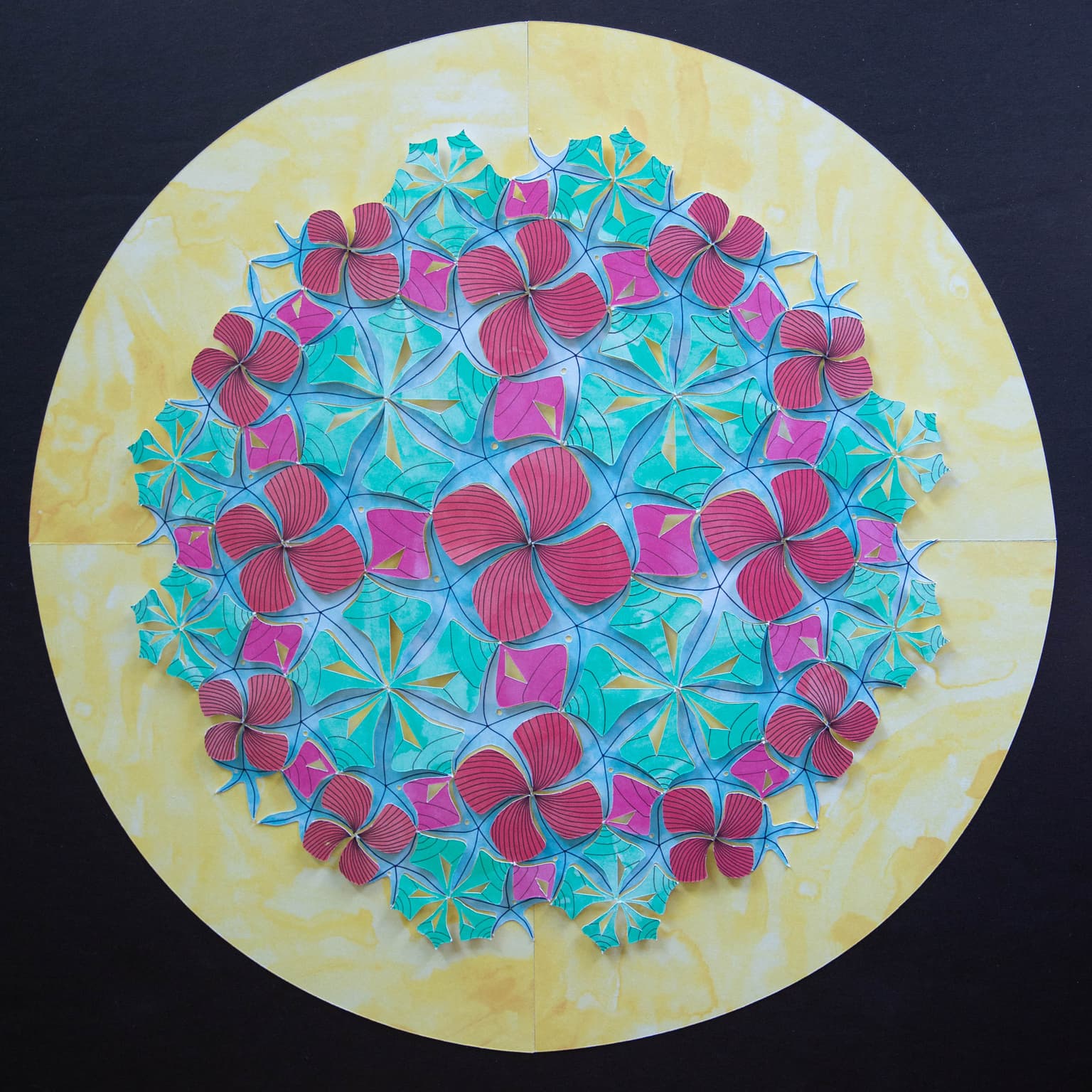2020 Joint Mathematics Meetings
Doug Dunham and Lisa Shier
Artists
Doug Dunham
Professor Emeritus of Computer Science
Dept. of Computer Science, University of Minnesota Duluth
Duluth, Minnesota, USA
Statement
We have been experimenting with different technologies for creating hyperbolic art, with a concentration on patterns in the Poincare circle model of hyperbolic geometry. In the past, we use a computer controlled embroidery machine to good effect. We are currently investigating the use of a computer controlled plotter/paper-cutter to create our patterns. Some schools have computer controlled paper cutters or plotters, so similar projects would be accessible to their students. Papercrafting is a way for primary and secondary school students to experience the creation of mathematical art. The current marketing of papercrafting to females suggests that it could be an excellent way to engage girls in both math and mathematical art.
Artworks

Hyperbolic Shells
40 x 40 cm
Computer plotted and cut paper
2019